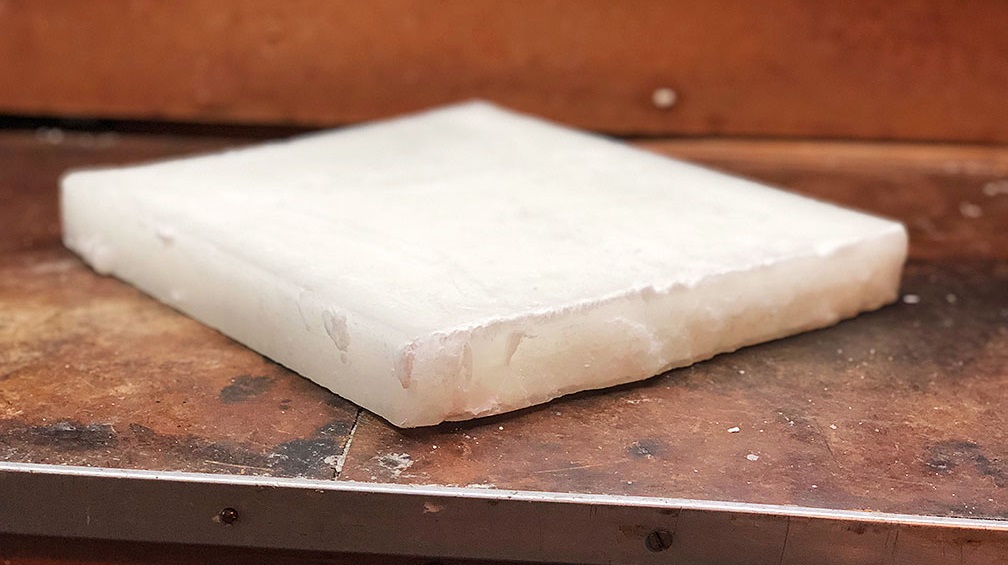
Paraffin wax (or petroleum wax) is a soft, colorless solid derived from petroleum, coal, or shale oil that is composed of a mixture of hydrocarbon molecules containing from twenty to forty carbon atoms. It is solid at room temperature and begins to melt above 37 ° C (99 ° F), and has a boiling point above 370 ° C (698 ° F). Common uses for paraffin wax include lubrication, electrical insulation, and candles; you can make crayons from dyed paraffin wax. It differs from kerosene and other petroleum products sometimes called paraffin. Uncolored odorless paraffin candles bluish-white odorless.
Paraffin wax was first created by Karl Reichenbach in Germany in 1830 and marked a major advance in candle making technology. as it burns cleaner and more reliably than tallow candles and is cheaper to manufacture. In chemistry, paraffin is used synonymously with alkane, indicating hydrocarbons with the general formula C n H 2 n +2. The name comes from the Latin parum («almost») + affinis, which means «no affinity» or «no reactivity», referring to the non-reactive nature of wax. Table of Contents 1 Real Estate 2 History 3 Manufacturing 4 Applications 4.1 Other Uses 5 Occupational Safety 6 See Also 7 References 8 External Links Properties Paraffin wax occurs primarily as a white, odorless, tasteless, waxy solid, with a typical melting point between about 46 and 68 ° C (115 and 154 ° F), and a density of about 900 kg / m 3. It is insoluble in water, but soluble in ether, benzene, and some esters. Paraffin is unaffected by most common chemicals, but it burns easily. Its calorific value is 42 MJ / kg. The hydrocarbon C 31 H 64 is a typical component of paraffin wax. Paraffin is an excellent electrical insulator with a resistivity of 10 13 to 10 17 Ohm · m. It is better than almost all other materials, with the exception of some plastics (especially Teflon). It is an efficient neutron moderator that was used in experiments by James Chadwick in 1932 to identify the neutron. Paraffin is an excellent heat storage material, with a heat capacity ranging from 2.14-2.9 J g -1 K -1 (joule per gram Kelvin) and a heat of fusion of 200-220 J g -1. Phase change cooling paraffin wax combined with retractable radiators was used to cool the rover’s electronics during manned missions to the moon in the early 1970s. The wax expands significantly when melted, which makes it possible to use it in thermostats with wax elements for industrial, domestic and especially automotive purposes.
History Paraffin was first created in 1830 by the German chemist Karl von Reichenbach when he tried to develop a means to effectively separate and purify wax substances naturally occurring in petroleum. Paraffin wax represents a major breakthrough in candle making because it burns cleanly and reliably and is cheaper to manufacture than any other candle fuel. Paraffin initially had a low melting point; however, this disadvantage was later rectified by the addition of a harder stearic acid. The production of paraffin wax experienced a boom in the early 20th century as a result of the growth of the meat and petroleum industries, as a result of which paraffin and stearic acid became by-products. Manufacturing The feedstock for paraffin wax is slack, which is a mixture of oil and wax, a by-product of lube oil refining. The first step in making paraffin wax is to remove the oil (degrease or dewax) from the slack wax. The oil is separated by crystallization. Most often, paraffin wax is heated, mixed with one or more solvents such as ketone, and then cooled. On cooling, the wax crystallizes out of solution, leaving only oil. This mixture is filtered into two streams: solid (wax plus some solvent) and liquid (oil and solvent). After the solvent is recovered by distillation, the resulting products are called «wax product» (or «pressed wax») and «foot oil». The lower the percentage of oil in the wax, the more refined it is (semi-refined or fully refined). The product wax can be further processed to remove color and odor. Finally, the wax can be mixed together to impart certain desired properties such as melting point and penetration. Paraffin wax is sold in liquid or solid form.
the resulting products are called «wax product» (or «pressed wax») and «foot oil». The lower the percentage of oil in the wax, the more refined it is (semi-refined or fully refined). The product wax can be further processed to remove color and odor. Finally, the wax can be mixed together to impart certain desired properties such as melting point and penetration. Paraffin wax is sold in liquid or solid form. Paraffin candle — the resulting products are called «wax product» (or «pressed wax») and «foot oil». The lower the percentage of oil in the wax, the more refined it is (semi-refined or fully refined). The product wax can be further processed to remove color and odor. Finally, the wax can be mixed together to impart certain desired properties such as melting point and penetration. Paraffin wax is sold in liquid or solid form. the wax can be mixed together to impart certain desired properties such as melting point and penetration. Paraffin wax is sold in liquid or solid form.